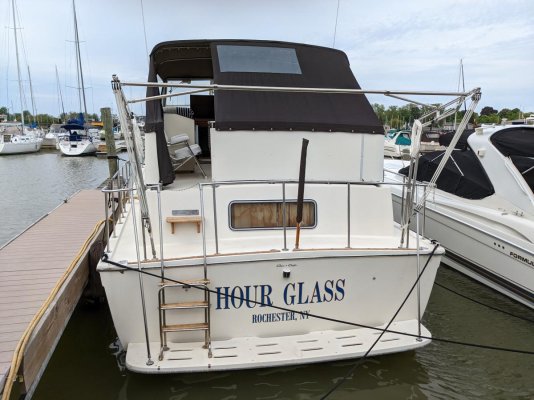rslifkin
Guru
- Joined
- Aug 20, 2019
- Messages
- 8,015
- Location
- Rochester, NY
- Vessel Name
- Hour Glass
- Vessel Make
- Chris Craft 381 Catalina
Sailboat decks are usually pretty open and flat without tall bulwarks. I wouldn't want to open the ports right next to those jerry cans just in case one gets hot enough in the sun to vent. But generally, having them lashed to the rails like that isn't a fumes concern, as most fumes will flow right off the boat. And any that manage to blow back to the cockpit will be significantly diluted by that point.
Looking at the picture below of my own boat, if I needed to carry spare dinghy fuel, it would likely be either lashed to the stern rail or on the swim platform. But I'm also slightly less paranoid about gas than some, as it's a gas powered boat, so the aft bilge (contains fuel tanks) and the engine room already have ignition protected equipment and ventilation to deal with fumes. Fumes in the forward bilge or cabin would be a problem though, as those spaces aren't gasoline containing normally and have electrical equipment that's not ignition protected.
Looking at the picture below of my own boat, if I needed to carry spare dinghy fuel, it would likely be either lashed to the stern rail or on the swim platform. But I'm also slightly less paranoid about gas than some, as it's a gas powered boat, so the aft bilge (contains fuel tanks) and the engine room already have ignition protected equipment and ventilation to deal with fumes. Fumes in the forward bilge or cabin would be a problem though, as those spaces aren't gasoline containing normally and have electrical equipment that's not ignition protected.
Attachments
Last edited:

